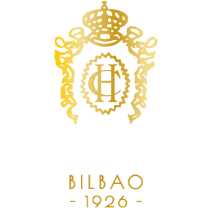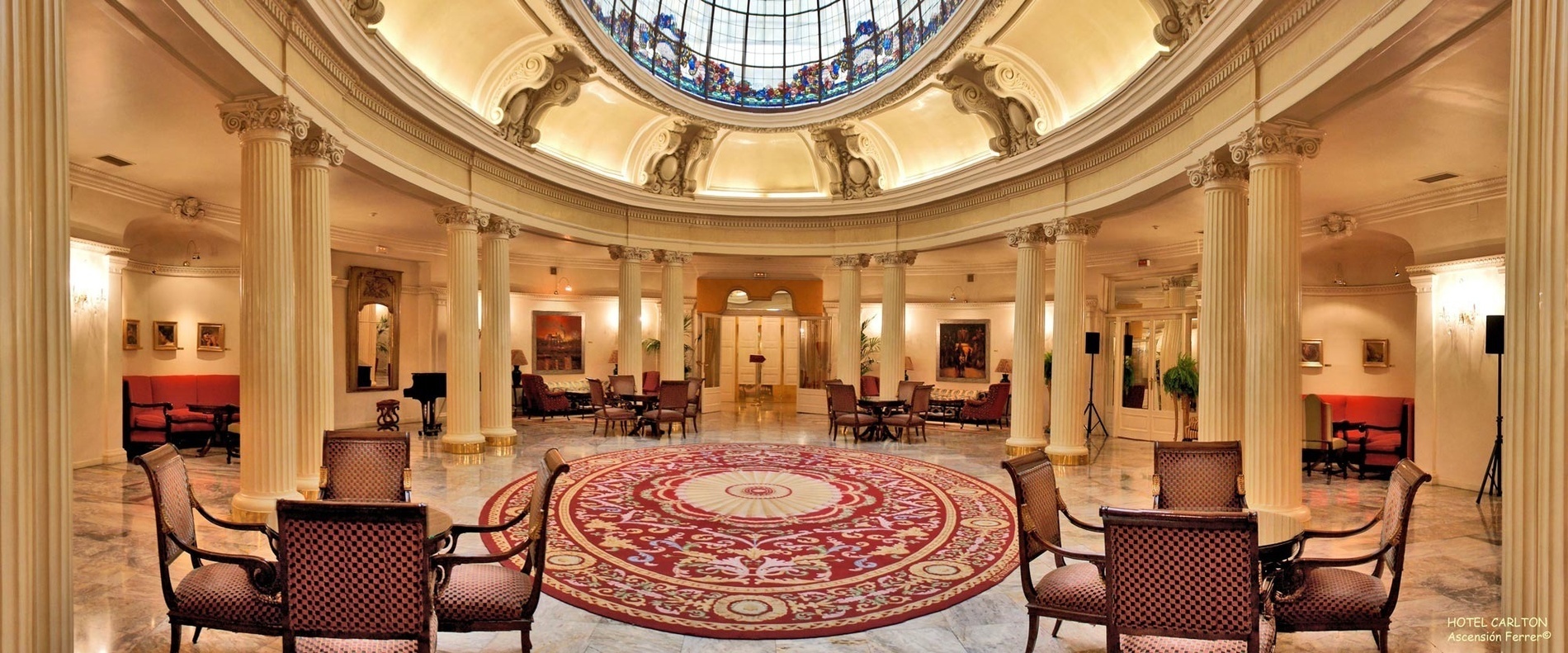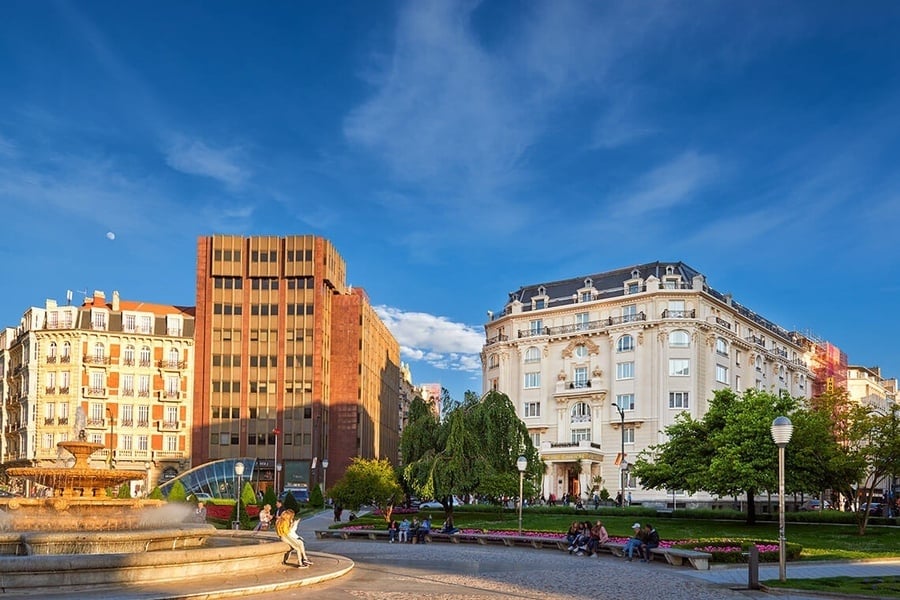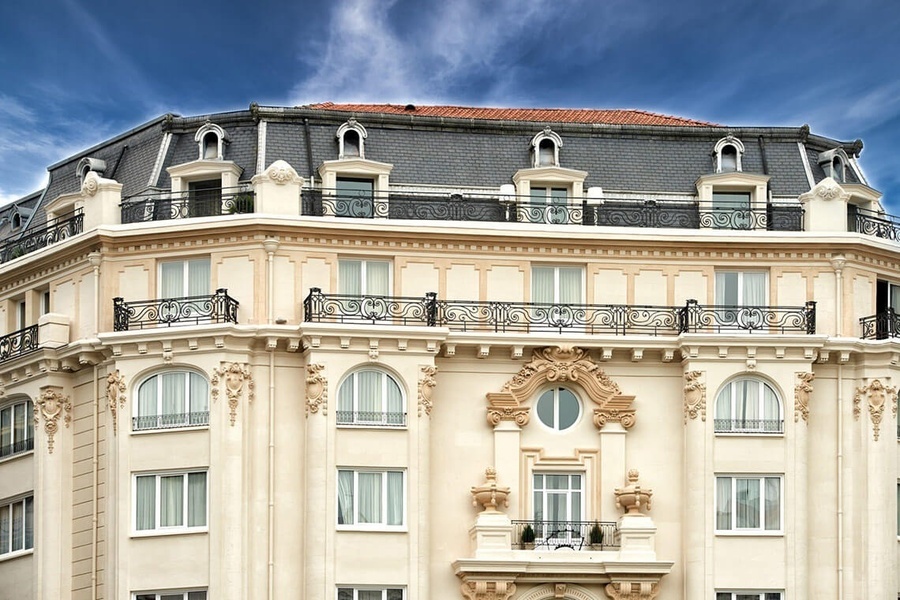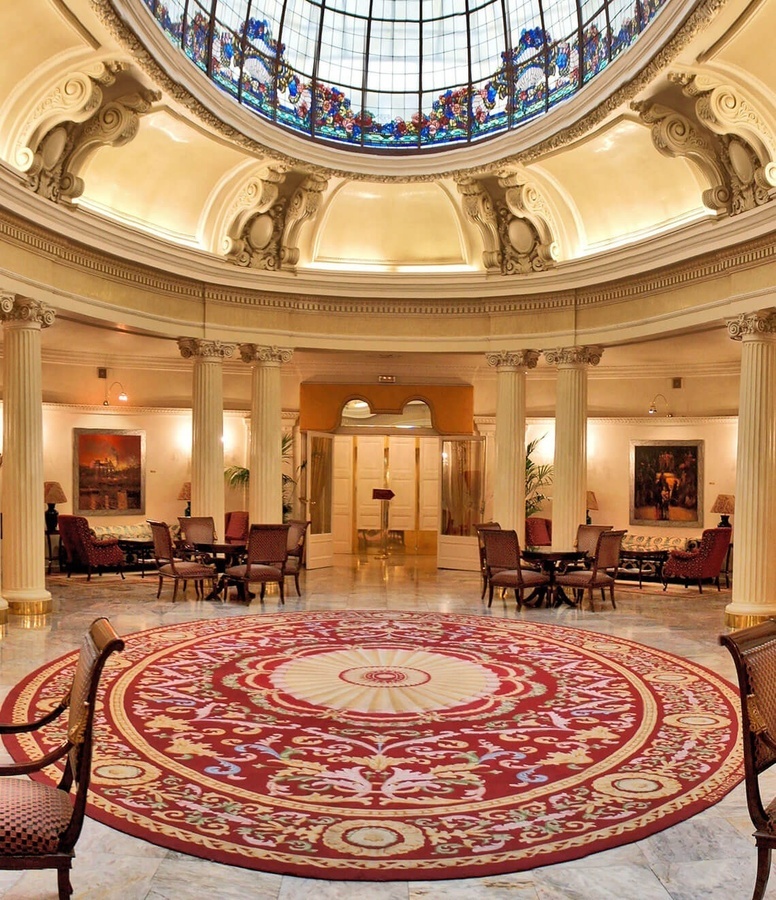Hotel Carlton
Our history
In 1926 the architect of Basque-English origin Manuel Maria Smith Ibarra saw the Carlton Hotel finished in what was his first intervention for the hotel world. Thus satisfying the palpable need in the villa for years, to have, like other neighboring capitals, a large luxury hotel.
The Carlton Hotel was built between 1919 (the year Manuel Maria Smith designed it) and 1926 representing a late example of the style of the Second French Empire in keeping with the tradition of grandiose hotel construction of the time. The great beauty of the building impresses with its triangular arrangement with chamfered corners.
The Carlton Hotel was built between 1919 (the year Manuel Maria Smith designed it) and 1926 representing a late example of the style of the Second French Empire in keeping with the tradition of grandiose hotel construction of the time. The great beauty of the building impresses with its triangular arrangement with chamfered corners.
